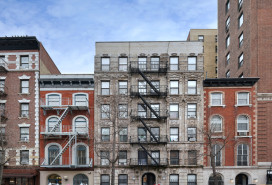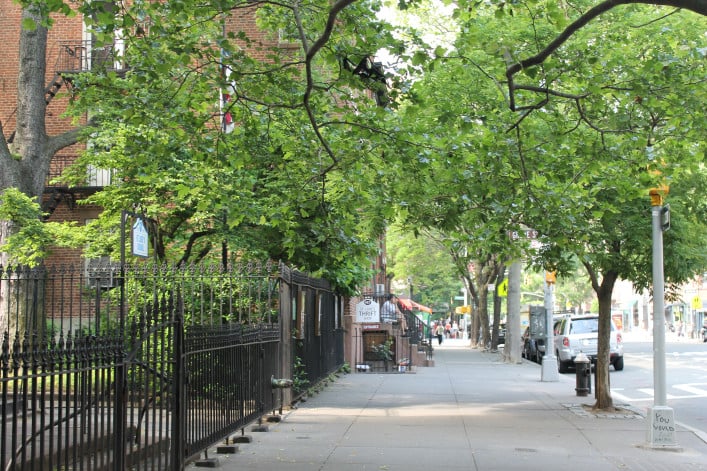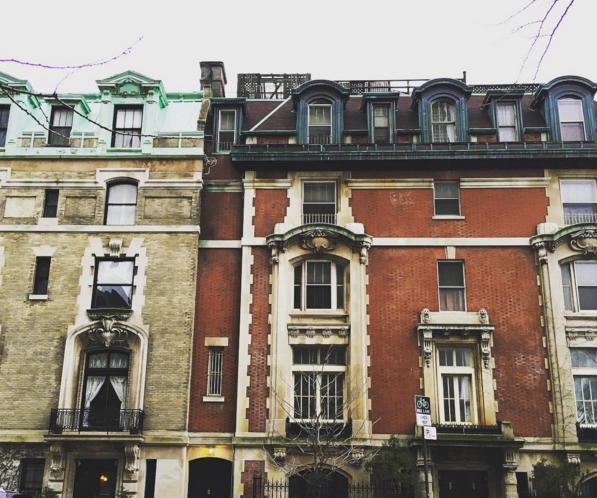Discover where NYC's iconic writers lived through this new audio tour
New York City has long been a nexus of the literary universe, home to both major authors and writing movements. It has provided inspiration, however brutally, for scribes like Betty Smith, whose impoverished Williamsburg childhood informed her novel A Tree Grows in Brooklyn, as well as ushered others into their graves, as with Dylan Thomas, who famously died after one too many at the White Horse Tavern in the West Village.
A map of the literary stars of NYC would likely have too many pins to be legible. Flavorwire's list of New York's most important living writers, which includes chronicler of 1980s excess Jay McInerney and Colson Whitehead, whose Underground Railroad just won the Pulitzer—names 100 people and arguably still misses plenty.
But now, in celebration of its 200th anniversary, publisher HarperCollins has created an audio tour that drops in on the NYC homes of eight of the city's literature greats, scratching the surface of how New York has shaped authors like Harper Lee, Richard Wright, and Edna St. Vincent Millay. (You might find that you're living near such creative history as the Harlem apartment where Zora Neale Hurston created a literary magazine called Fire with the intention of shaking up the then staid, African-American literary establishment.)
A common theme in the lives of the authors profiled is how New York City served as both a source of challenge—almost every aspiring artist who has landed here has experienced the shock of the city's utter indifference to their dreams—and of opportunity. Betty Smith, for instance, grew up in Williamsburg tenements that she referred to as "soundboxes" for their total lack of privacy; she was so lonely there that she would pretend inanimate objects were her friends.
After her father died at the age of 40, she was forced to leave high school to work and contribute to the family's income. Eventually, though, she was able to secure an evening job that allowed her to return to school, and spend some time at the Jackson Street Settlement House, a community center in Greenpoint. The Historic Greenpoint blog notes that the "tree of heaven" from A Tree Grows in Brooklyn, which serves as a symbol of hope for the novel's struggling immigrant characters, was in fact inspired by a tree in the backyard of the house. (The property still serves neighborhood children, as it has since 1901.)
Richard Wright, a fellow Brooklynite, moved to his adopted home in 1937 to "give himself a chance as a writer," after a tumultuous childhood in the deep south. He had an early breakthrough when one of his short stories won first prize in a magazine contest, and Harper and Brothers editor Edward Aswell decided to publish his collection based on its strength. This good fortune didn't immediately amount to actual fortune, though: Wright then moved to 175 Carlton Avenue in Fort Greene, a home he shared with a married couple and their two young children.
The place was so raucous that Wright would flee each morning to Fort Greene Park, where he would sit on a bench and "write intently on a yellow legal pad the novel that would become Native Son," according to the audio tour. Without his challenging living arrangements, who knows whether Wright would have completed the novel to such resounding success--which later enabled him, along with his wife and son, to upgrade to his own six-room apartment nearby, at 89 Lefferts Place.
Today, 89 Lefferts houses 32 co-op apartments, while 175 Carlton is home to rentals; most recently, a one-bedroom there rented for $2,650 per month, a price that would probably shock Wright, given his frustrations living there. (If you visit Fort Greene Park today, you may spot the bench that holds a plaque in his honor.)
Would-be writers would do well to take inspiration from Zora Neale Hurston, whose confidence, upon her landing in NYC, quickly helped her snag a job and a spot at a prestigious university. The Florida-born, African-American author of Their Eyes Were Watching God apparently responded to discrimination by wondering aloud, "How can anyone deny themselves the pleasure of my company?"
Hurston moved to Manhattan after one of her stories won an award from Opportunity Magazine, and her attitude surely served her at the awards banquet, where she managed to get work as a secretary for novelist Fanny Hurst and a scholarship to Barnard College. (She studied anthropololgy, and would become the first black woman to graduate from the school.) She lived for five years at 43 West 66th Street and later moved uptown to Harlem, where she hosted gatherings attended by writers like Langston Hughes.
Staying afloat financially in NYC, though, was too difficult (a familiar plight for many other artists here), and Hurston returned to Florida so that she'd have more time to focus on her writing. She published Their Eyes Were Watching God in 1938, but the novel, now considered a masterpiece, garnered little notice at the time. Hurston disappeared from public life, and her former NYC homes were torn down and replaced. Her writing legacy, at least, has a longer lasting legacy than her real estate, thanks to writers like Alice Walker, who brought it to light.
You Might Also Like

























